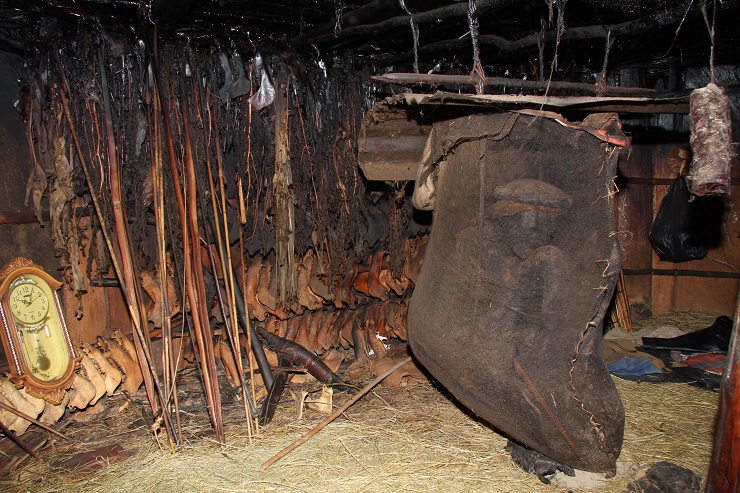The social world that surrounds us is comprised of people with whom we share traditions, norms and values. That’s not all, however. There are still those who are not like us, not even a little bit; those in whose vicinity we do not choose to live – i.e. the Others.
Archaeology and Anthropology may be so close to each other because of their mutual focus on understanding cultures and societies that are diametrically different from the current (i.e. the western) one. From the very outset the concept of “the others” was viewed as being intrusive by both these disciplines, naturally as a result of the interest in regard to the knowledge of exotic people, their customs and items. Generally they are defined in accordance with their cultural traits and their behaviour patterns. The perception of difference, however, is closely associated with the historical perspective that adds another dimension in regard to assessing the relationship between the actual society and the other beings living outside its borders. Because the further back in time we go, the circle of people who were regarded as part of their own culture narrows. Nowadays we look upon Europe as being our homeland and its people as being close to us but in 1805 one of Napoleon’s Dragoons wrote this home from Moravia: “I can tell you that here I am in a country where they speak neither German nor French. The women here have faces like monkeys, hands like dogs’ paws, legs like a camel.” A description of this nature, in which the physical appearance of others is not denoted in terms of human criteria, is directly analogous to descriptions of natives living in exotic countries.
The universal category, probably pertaining to all human communities, is ethnocentrism. On this basis we divide the world into a dichotomy of different levels i.e. into: we – foreigners, we – the others, we – non-humans. The iconic examples of this manner of thinking result from a historical epoch of overseas discoveries and, specifically the period that followed the discovery of America in 1492. Language was considered as the basic parameter defining the difference between Europeans and Indians, since the inability of foreigners to communicate has always been considered as being a sign of their otherness. Christopher Columbus therefore even wondered whether the Indians of the Caribbean could even be regarded as being human beings – they would at least have to be able to speak a language of the known world. At first he thought that in the local language he recognised some Spanish words and he scolded the natives for their poor pronunciation. Gradually Columbus came to the conclusion that they were not even subordinate humans but only living things. Let’s add to this (provided that the relevant sources allow us to take it into consideration) that the original inhabitants of the colonised countries looked exactly the same as their European conquerors.
There were also ongoing attempts, based on anthropology and archaeology, to define the primary features of cultural otherness from an instinctive perspective. Very soon, however, both of the disciplines started to build on more precise criteria. Archaeology, based on sorting through the artefacts, started to be able to identify the different material content pertaining to the individual chronological periods of prehistory, while also simultaneously linking it to specific geographic areas. Anthropology meanwhile was working on defining the otherness of “others”. The main axes of the differences between the modern and the pre-industrial world were language, social disposition and the way of thinking, cultural and ethnic identity, social organisation, kinship systems and adaptation.
At first glance the basic nature of the society (its temperament and its character...) and of the institutions that this nature produces, were a possible starting point for defining the differences between primitive and modern communities. Many researchers have tried to pin-down this feature and to create a theory of mutual social differences. The schemas that were created in the 19th and the 20th Centuries worked on the basis of differing concepts, ranging from integration, through a legal framework to a manner of thinking whereby both these worlds were compared.
|
|
| The differences between ourselves and “the others” also exist in an entirely different conception of space. The interior of the mens’ house of the Dani from New Guinea also comprises a section that is dedicated to memories of the past. The larger part of this space is taken-up by a collection of the lower jaws of the pigs that were eaten during all the festivities that the community has ever hosted. Also kept in this same case there is the mummified body of one of its famous ancestors (hanging in the net). Whether the pendulum clock witnessed any significant past events, or whether it is just a curious exhibit is not entirely clear. Photo by Jan Rendek, the Dani, Western New Guinea (Papua), 2008.. |
Want to learn more?
- Fabian, J. 1983. Time and the Other: How Anthropology Makes Its Object. New York: Columbia University Press.
- Květina, P. 2010. Archeologie smyšlené identity. Archeologické rozhledy 62/4:629-660.
- Mason, P. 1990. Deconstructing America: Representations of the Other. London: Routledge.
 Archeologické 3D virtuální muzeum
Archeologické 3D virtuální muzeum

.jpg)
